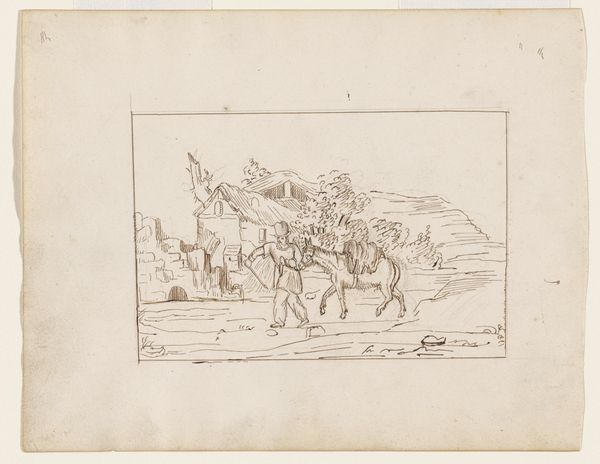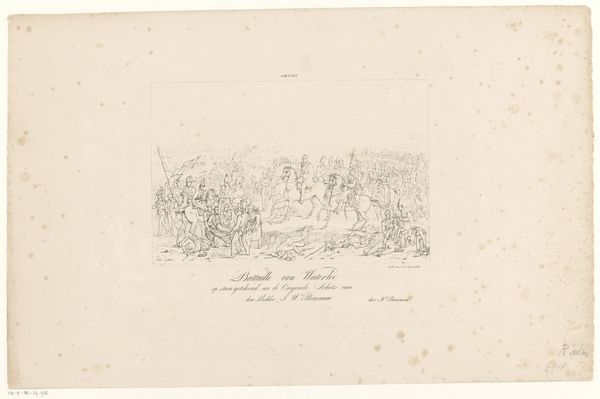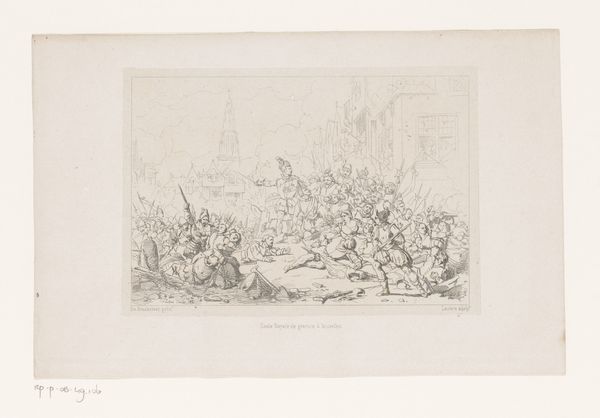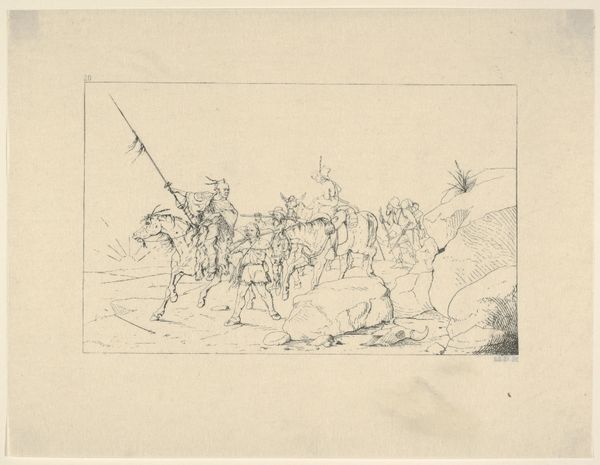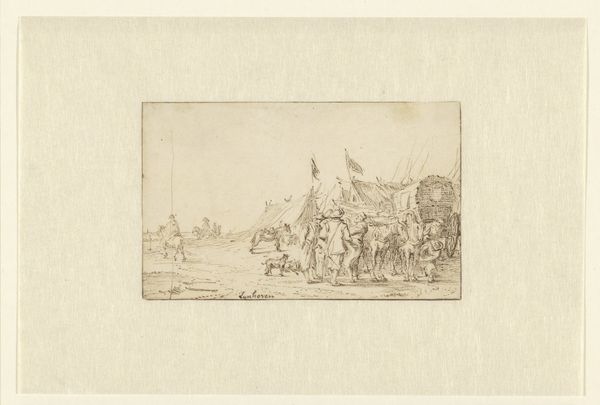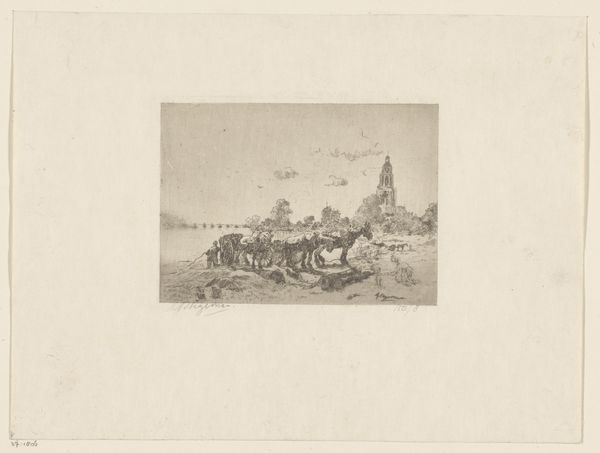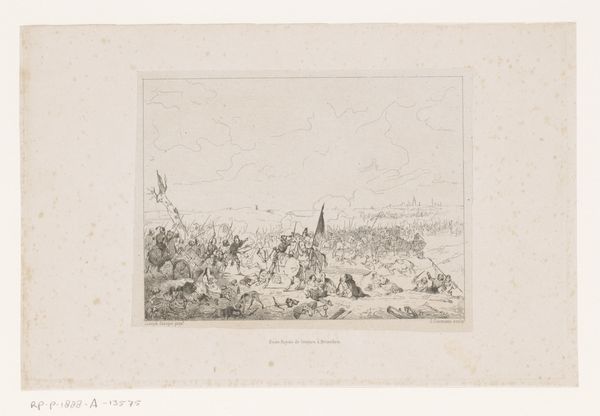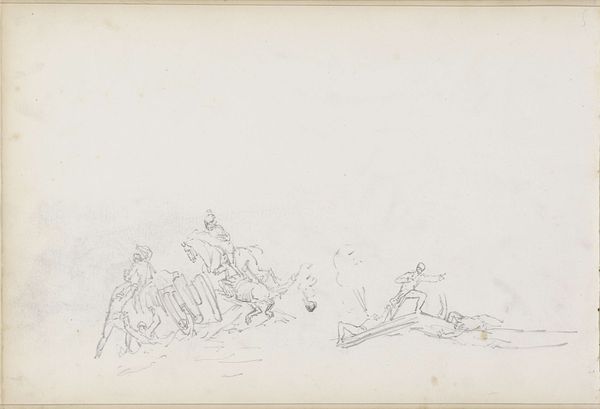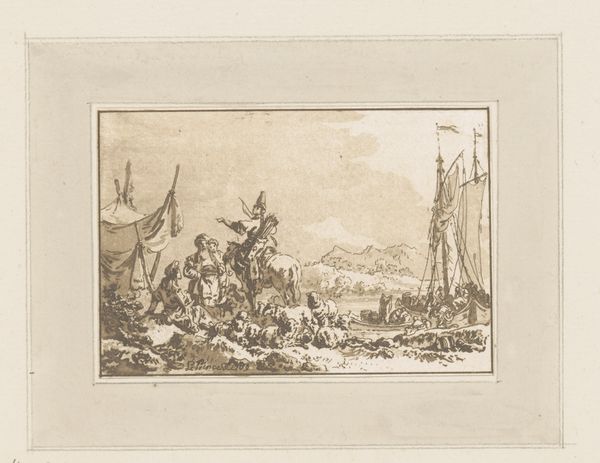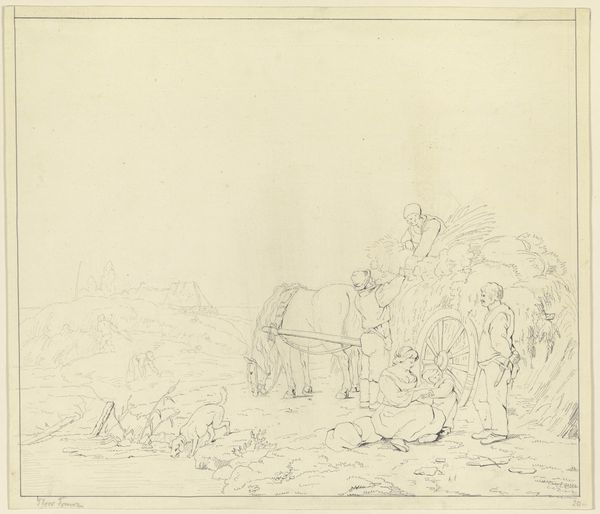
drawing, print, etching
#
drawing
#
narrative-art
# print
#
etching
#
landscape
#
etching
#
figuration
#
history-painting
#
academic-art
Dimensions: height 171 mm, width 227 mm
Copyright: Rijks Museum: Open Domain
Editor: So, here we have Charles Onghena’s etching, “Golgotha,” from 1834. It depicts the crucifixion, and what strikes me immediately is the sheer amount of labour involved in producing this highly detailed, intricate scene through the etching process. What draws your eye when you look at this print? Curator: The use of etching here is significant. Consider the time, skill, and resources—the copper plate, the acids, the press—needed to create multiples of this image. It turns a singular event, a sacred moment, into a mass-produced commodity, available for dissemination and consumption. How does that transformation affect our understanding of the image? Editor: That's a really interesting point. So, in essence, the act of creating it and reproducing it shifts it from simply a religious scene to a more broadly accessible product? Curator: Precisely. And consider the social context. Who was buying these prints? What role did the availability of such images play in shaping religious sentiment, or perhaps even solidifying certain power structures of the time? This isn't just about devotional practice; it's about the means by which those practices were manufactured and circulated. Editor: It's almost like religious propaganda, in a way. But thinking about the labour too, you can also see how Onghena’s artistic labor, replicated through the printmaking process, contributed to a specific visual language surrounding religious narratives. Curator: Exactly. It underscores the vital connection between artistic production and the larger social and economic frameworks that support it. We must never forget the artist's labor involved, but we have to view the act within a context of labour history and class struggles to understand that artist and their piece of art. Editor: That's a perspective I hadn't really considered before. It really changes how I view not only this image, but also how art of this period was produced. Curator: Indeed. Hopefully, this provides a framework for a deeper appreciation of art, acknowledging both artistic vision and material realities.
Comments
No comments
Be the first to comment and join the conversation on the ultimate creative platform.
